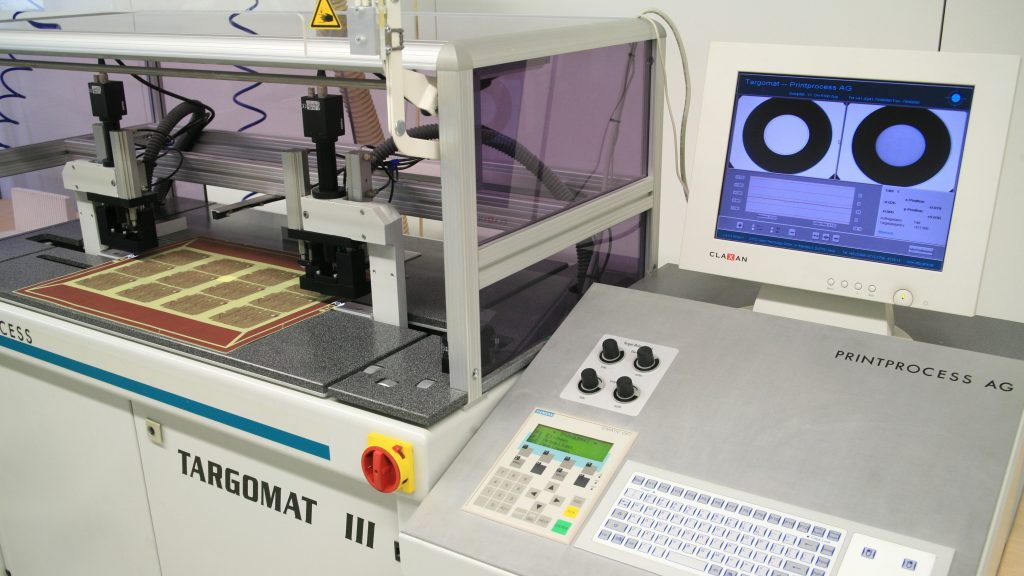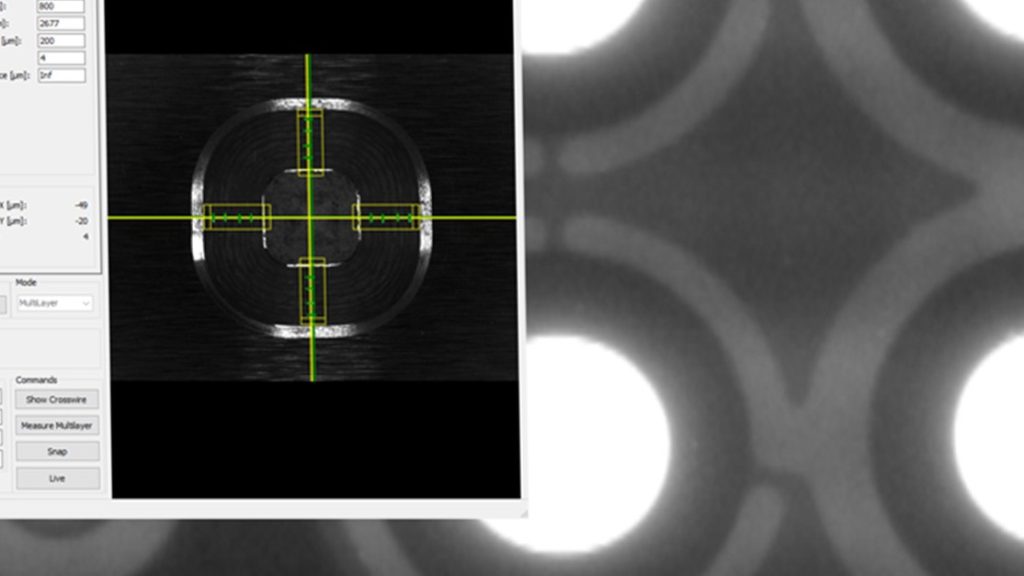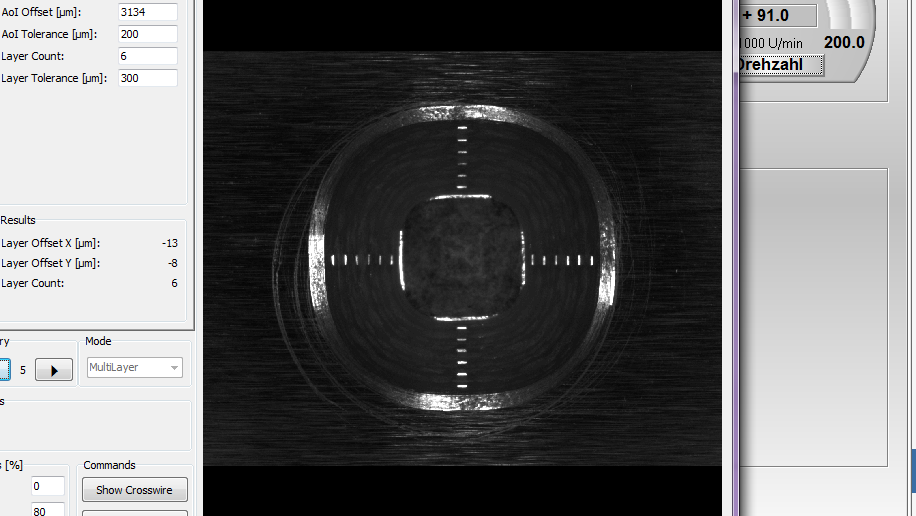Innovation through software-supported multilayer production
At Becker & Mueller, we react proactively to the increasing demands on circuit board technology. Because in the production of prototypes it is said: development is progress! And that applies to the development and production of all types of PCB – from the implementation of special customer requests to standard PCBs. In order to always be able to offer our customers the best possible quality and reliability in connection with the latest production methods, Becker & Mueller is constantly looking for optimization opportunities. The active implementation of the Industry 4.0 respectively the smart factory idea, for example, offers numerous possible approaches. This also applies to the production of multilayer PCB. The result is the innovative combination of the possibilities provided by the production machines with a specially developed IT-supported software – our software-supported multilayer registration system for layer misalignment control and optimization.
When manufacturing multilayer circuit boards, it is imperative that all layers are precisely aligned to each other. In concrete terms: the layout on the inner layers must be positioned precisely in relation to the layout on the outer layers and the drilling pattern on the PCB panel. The challenge here is that the hidden conductive pattern of the inner layers is no longer visible from the outside during the processing of the last two work steps.
In order to still meet these requirements, the fully structured inner layers are optically recorded by the “Targomat” multilayer registration system from the Swiss Printprocess AG using registration marks, automatically aligned and provided with centering holes. The inner layer cores are adjusted using a two-pin system and riveted in the exact position for the subsequent pressing process. In the next process step – drilling the pressed multilayer – the specially developed software support now takes effect. The CNC drilling machine mills free registration marks on the inner layer cores and uses the camera registration system to determine their relative and absolute position in order to be able to adjust the drilling pattern. This data is used by the Becker & Mueller software to calculate the layer misalignment or the distortion of all inner layers of the pressed multilayer. Corresponding correction values (for each individual layer, top and bottom) are automatically stored for the corresponding article in the IT article management. The data obtained takes into account misalignment and warping that can occur during the pressing process and minimizes their effect by using them to compensate in the subsequent exposure process (of the outer layers). The drilling and conductive pattern of the panel are optimally adapted to the inner layers. Subsequent X-ray testing (optical layer misalignment control) after the drilling process can be used to check the positional accuracy of the bores in relation to the internal residual rings – i.e. the electrical contact surfaces between the outer and the individual inner layers. The occurrence of possible electrical faults in the finished PCB is significantly minimized, thus avoiding unreliability and rejects. In the event that a detected deviation is outside the permissible tolerance (and also to optimize the panel when reordering), correction values are also calculated for the exposure of the inner layers. In the case of complex layer structures, filigree structures or narrow tolerances, one panel is generally first produced until the drilling process. Only when the corresponding correction values are available are the remaining inner layers of the series exposed using the new data.
“In addition to our claim to the quality and reliability of our PCB, the increasing miniaturization is also driving us to uncover optimization potential. Increasing precision is just one of many topics, which is far from being thought through to the end.” For Janik Becker, the permanent further development of technologies and processes is the basis for staying up-to-date in prototype production.


